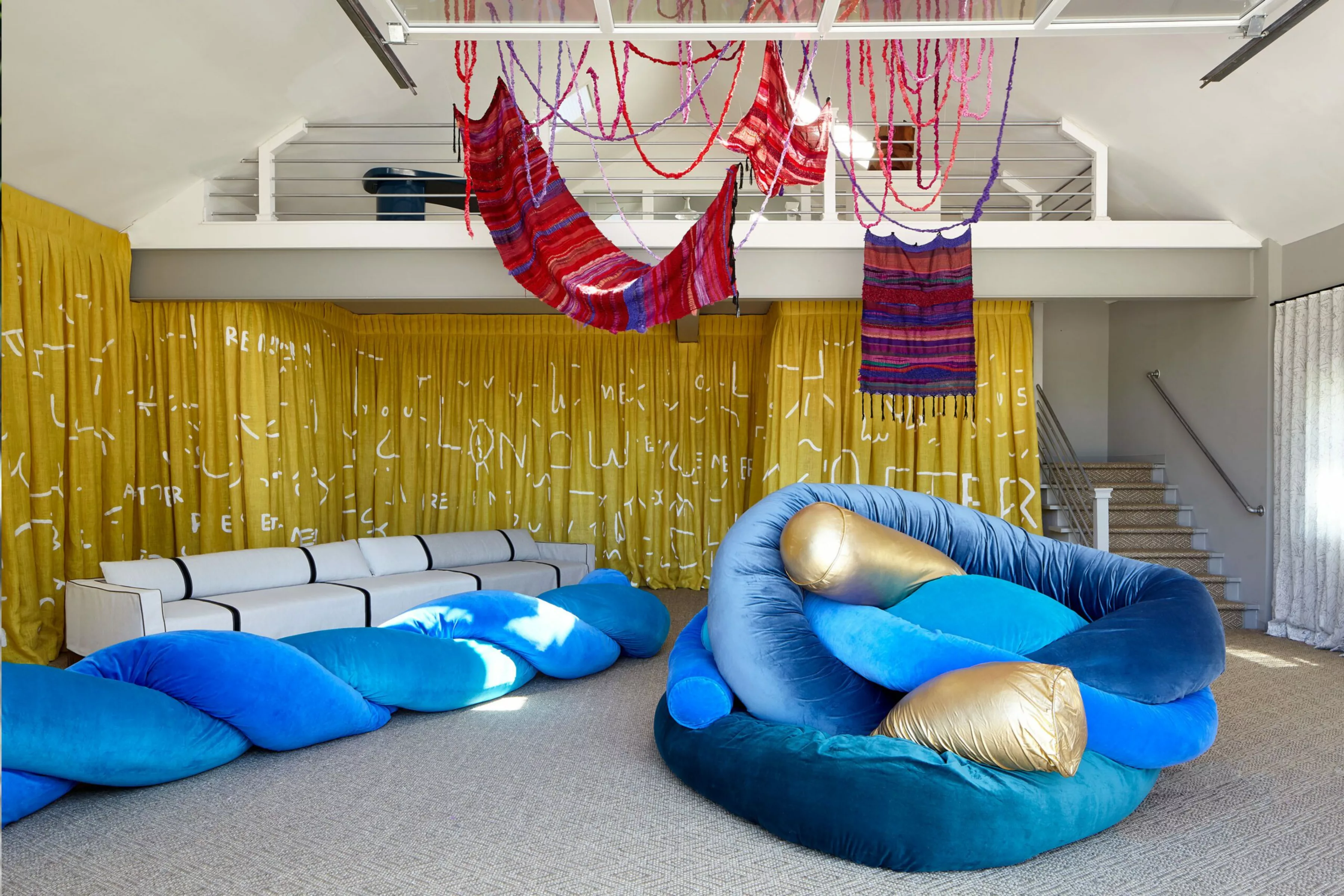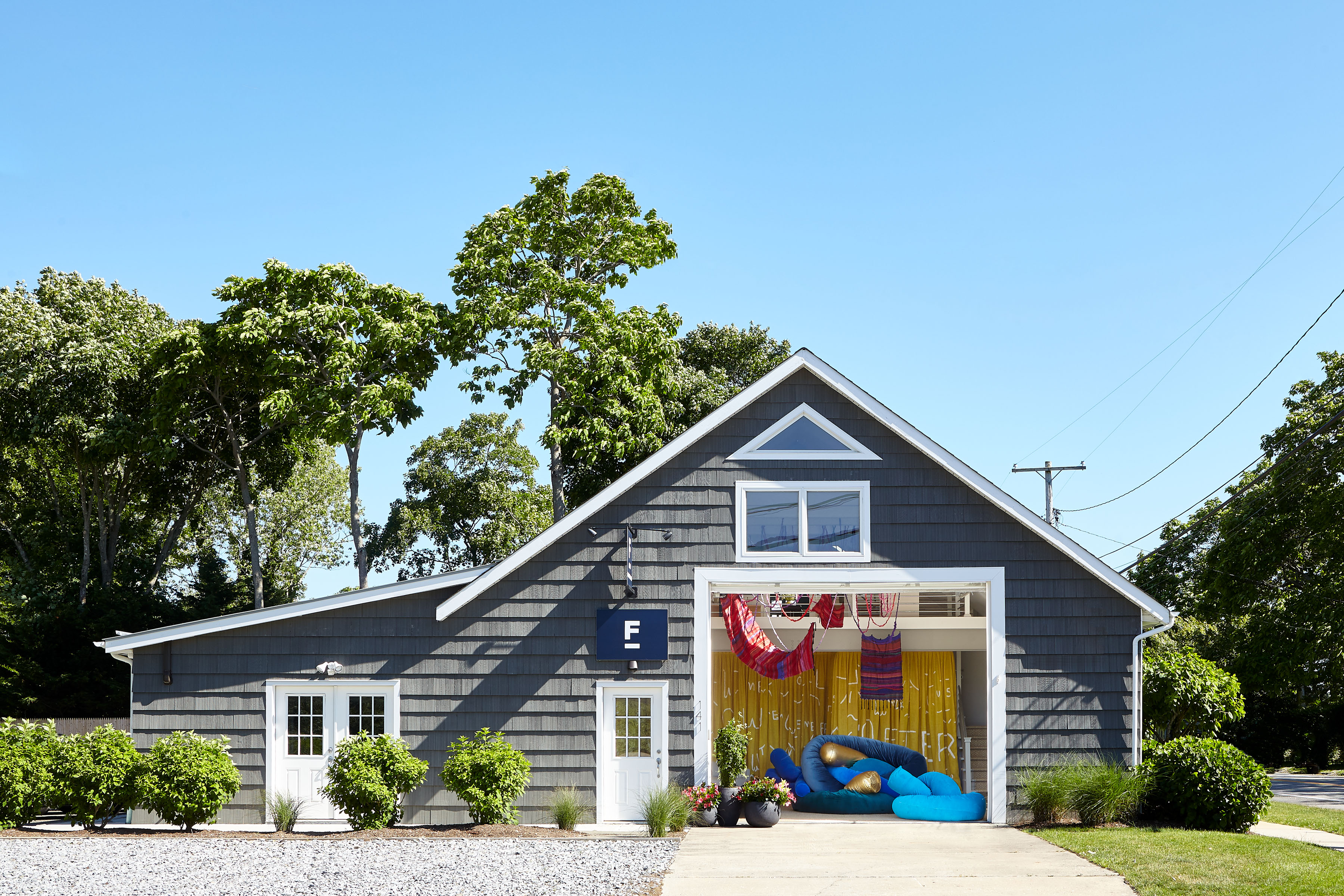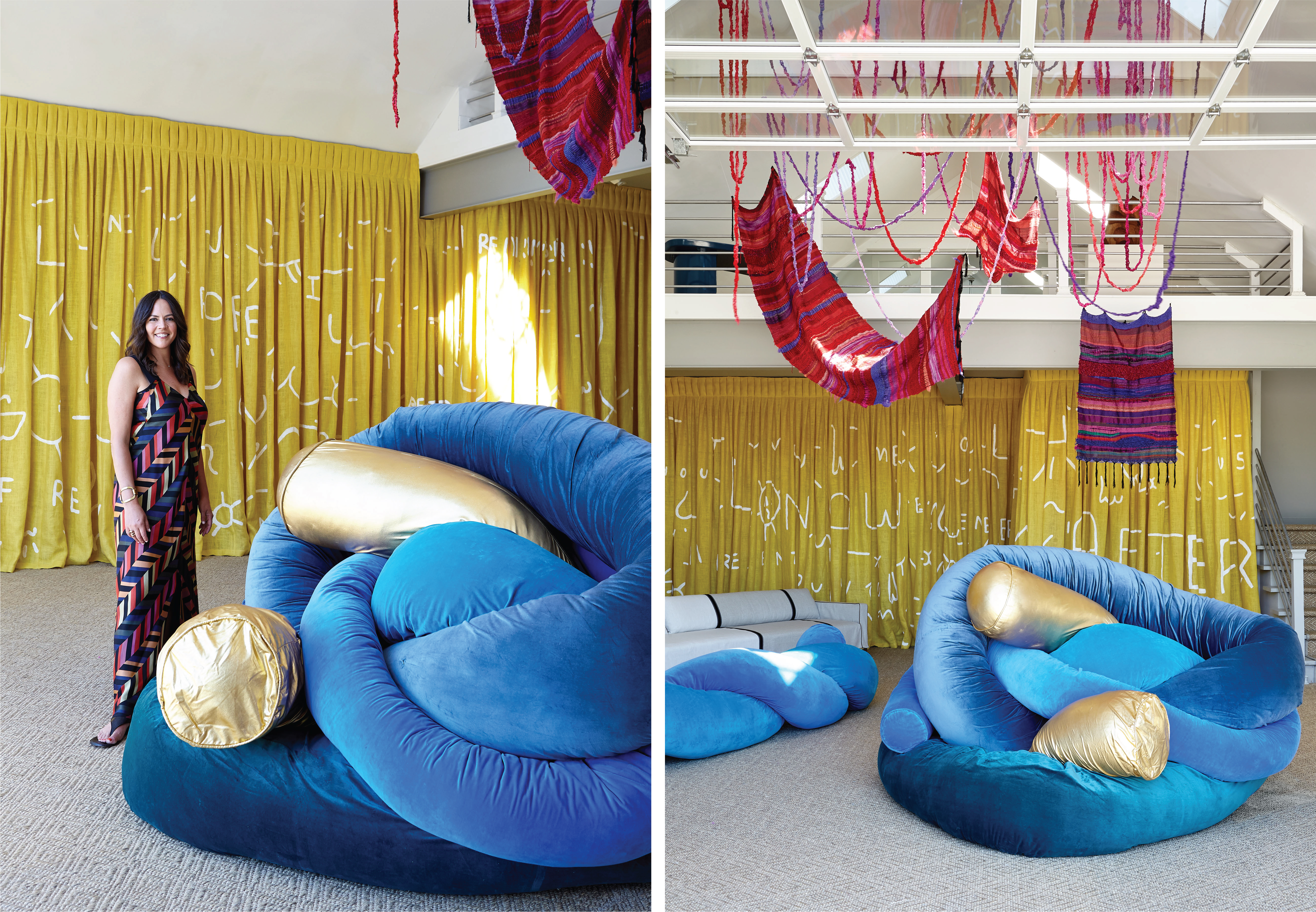Curated by Elena Frampton, Body Language introduces work by three female artists: Aliana Grace Bailey, Molly Findlay, and DZ Maciel. The colorful, tactile works represent and encourage bombastic play, audacious movement, and the softness of connection anew.
Centered within the space are NY-based stylist, designer and artist Molly Findlay’s Mrs. Noodle pillows. The installation is comprised of seven 20-foot-long cushion ropes, 140 feet altogether, in vibrant shades of blue and gold. Undeniably silly in their abstraction, yet refined in their construction, the pillows are made in the U.S. from Belgian cotton velvet and sustainably-harvested kapok fiber filling. Findlay, a New York-based prop stylist and sculptor, gently subverts the everyday experience through her work, questioning how environments and objects can inform our behavior.
Above the larger-than-life Noodles, a site-specific installation by Aliana Grace Bailey is gracefully suspended from the soaring ceiling heights. Composed of hand-dyed and loomed textiles, the installation brings together Saori weavings and crocheted ropes. Saori, a free and expressive style of weaving originating in Japan, is rooted in dignity and the acceptance of imperfection. Bailey is a multi-hyphenate, socially-engaged artist and designer based between Baltimore and Washington DC. Through a series of investigations in materials and space, her work focuses on intimacy, and her installation at The Barn is a visual representation of the physical movements and rituals involved in her work.
The entire space is wrapped in the whimsical and poignant illustrations of Brooklyn-based interdisciplinary artist and choreographer DZ Maciel. Her visual concept facestudy has been presented for the first time as interactive, inviting audiences to touch and manipulate the tapestry of faces and ideas “dancing” together in celebration of communion. With messages interspersed across the 125 yards of textile, the mural elicits wandering and dreaming of “summers before,” while conjuring joy as we think about the season upon us: the “summers after.”




